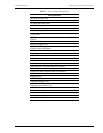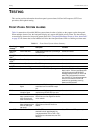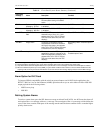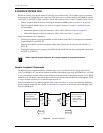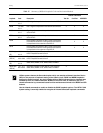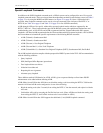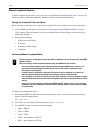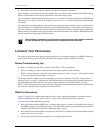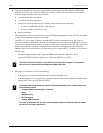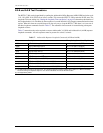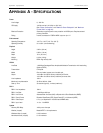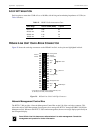
152-388-100-02, Issue 2 Testing
H2TU-C-388 List 1 June 6, 2000 43
4 Press SEL to activate the selected loopback. The previous loopback is terminated.
Once a loopback is selected and activated, the loopback stays active until it times out (based on the LBTO setting).
When a loopback times out, the display then returns to the normal display mode.
You can terminate loopbacks manually and exit the MAN LPBK mode by simultaneously pressing the MODE and
SEL buttons for 3 or more seconds. If no loopback is active, the MAN LPBK mode automatically terminates after
30 seconds.
All loopbacks (except dual loopbacks) can be initiated by inband commands in the DS1 payload. Loopbacks can
also be initiated by a command from the HiGain system (front-panel buttons or maintenance screen selections).
Therefore, whenever a loopback is active, the method by which it was activated is indicated in the Loopback and
Status screens by the annotation HG or PL adjacent to the identified loopback. For example, NREM-HG indicates
that the loopback was initiated by the HiGain system.
LOOPBACK TEST PROCEDURES
The following sections provide step-by-step test procedures for verifying the integrity of the HDSL2 channels at
every module location as well as the DS1 channels to the customer and the local DSX-1 interface.
General Troubleshooting Tips
If trouble is encountered on the DSX-1 interface of the H2TU-C-388, verify that the:
• H2TU-C is making a positive connection with its mounting-assembly (shelf) connector.
• H2TU-C internal equalizer is set to the correct distance range per Table 5 on page 17. All equalizers should
be set to the distance from the DSX-1 to the shelf.
The transmit and receive DSX-1 ports have splitting access jacks and miniature, 210-series, monitor jacks as
shown in Figure 1 on page 3. Connecting one cable between the two monitoring jacks and another between the
two LINE jacks splits the IN and OUT and creates metallic loopbacks towards both the DSX-1 and the
H2TU-C-388. If separate plugs are inserted into both LINE jacks with the other end disconnected, the MON jacks
can be used to send and receive test patterns towards the DSX-1.
GNLB Test Procedures
Figure 27 on page 44 is a graphical representation of the various loopback configurations with the associated
GNLB commands shown. Also, refer to Table 15 on page 40 for a description of these commands.
To perform the GNLB loopback test procedure:
1 Have the CO tester send the NREM (3-in-7) inband loopup code for 5 seconds. You should be able to observe
the NREM message on the front-panel display. (The Status LED on the front panel should be green, and the
loopback mode should also be identified on the Span Status screen.)
2 Have the CO tester transmit a DS1 test signal towards the H2TU-C-388 and verify that the returned (looped)
signal to the test set is error-free.
3 If step 2 fails, have the CO tester transmit the 3-in-5 inband loopdown code.
SMJK loopback commands are only activated by inband commands. Dual loopback commands
are only activated by the front-panel buttons or maintenance screen selections.



